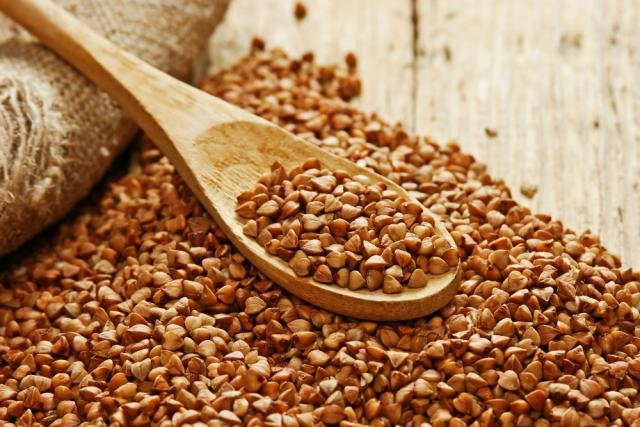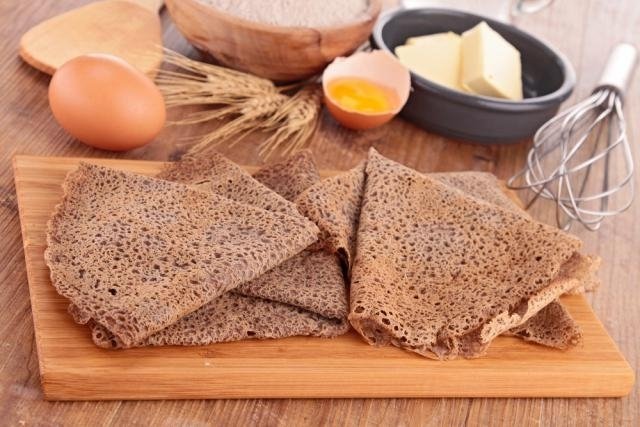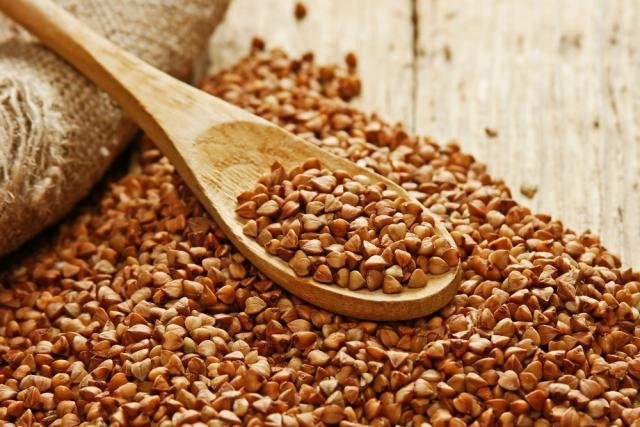Buckwheat is actually a seed, not a grain like common wheat. This seed has a very hard shell and is pink to brown in color, and does not contain gluten, and can be used by people who have celiac disease or sensitivity to gluten.
Furthermore, due to the amount of nutrients, this food can also be consumed in place of rice or used to increase the nutritional value of salads and soups, for example.
Buckwheat can be found in its natural form or in the form of fine flour, and can be used to replace wheat flour in the preparation of cakes and breads, for example.

Main benefits
The main benefits of buckwheat are:
1. Reduces cholesterol levels
Some studies have shown that the protein present in buckwheat helps to reduce total cholesterol and LDL cholesterol levels in the blood, in addition to reducing the concentration of hepatic cholesterol, as it regulates the activity of liver cells.
Furthermore, buckwheat reduces the absorption of cholesterol in the intestine and helps its elimination, thus favoring the prevention of cardiovascular diseases.
2. Lowers blood pressure
Buckwheat helps reduce blood pressure due to the amount of polyphenols, such as rutin and quercetin, which contribute to the regulation of the renin-angiotensin system, responsible for controlling blood pressure.
Furthermore, it is also believed that buckwheat stimulates the production of endogenous vasodilating substances such as bradykinin and nitric oxide, favoring the reduction of blood pressure.
3. Has an antioxidant effect
Due to the amount of flavonoids, such as orientin, vitexin, rutin and quercetin, buckwheat has an antioxidant effect that helps neutralize free radicals that cause damage to cells, reducing the appearance of cardiovascular and neurodegenerative diseases, the formation of tumors and aging. precocious.
4. Lowers blood sugar levels
Because of the amount of quercetin and rutin, buckwheat also decreases insulin resistance due to its ability to increase the activity of liver antioxidant enzymes.
Furthermore, this seed contains important amounts of D-chiro-inositol, a substance that can be used by diabetic patients to regulate insulin. Thus, buckwheat is digested slowly due to the presence of polyphenols, which also helps regulate blood glucose levels.
On the other hand, the presence of resistant starch means that buckwheat has a low glycemic index, which also helps regulate blood sugar, preventing obesity and the development of heart disease and diabetes.
5. It has a neuroprotective effect
Buckwheat can help prevent neurological diseases, such as Alzheimer’s, as it inhibits the release of glutamate, a neurotransmitter that, when accumulated in the brain, contributes to the degeneration of neurons.
Furthermore, it also prevents the death of cells in the hippocampus, an area of the brain responsible for memory, and its high tryptophan content helps regulate mood and avoid depression.
6. Strengthens muscles
Since it contains several essential amino acids, such as lysine and arginine, for example, buckwheat promotes muscle health, promoting muscle growth, formation and recovery.
7. Improves intestinal transit
Due to its high content of dietary fiber, which regulates bowel movements and promotes stool hydration, buckwheat helps prevent constipation and prevents infections that can affect the gastrointestinal tract.
Furthermore, when consuming buckwheat in its fermented form, it also acts as a probiotic, providing healthy microorganisms for the intestinal flora and balancing the body’s pH.
8. Reduces gas production and indigestion
Because it does not contain gluten, buckwheat can help reduce gas production and symptoms of poor digestion, in addition to preventing other digestive disorders, such as irritable bowel syndrome.
Therefore, consumption can also be considered safe for people with celiac disease or gluten sensitivity.
9. Maintains bone and dental health
The manganese and magnesium present in buckwheat guarantee bone health, as they promote the synthesis of enzymes essential for the formation and maintenance of bones, in addition to promoting the absorption of calcium in the intestine.
Furthermore, this seed also contributes to the health of your teeth, as it contains magnesium.
10. Provides vitamins and minerals
Buckwheat is a great source of B vitamins and minerals such as manganese, zinc, magnesium, phosphorus and iron, which promotes blood circulation, blood vessel health, muscle growth and digestion, as well as helping prevent anxiety, depression and headaches.
Nutritional information
The following table provides nutritional information for 100 g of whole buckwheat and in flour form:
Buckwheat can be used to replace wheat flour or grains such as rice and oats, and can be consumed in the form of porridge or added to preparations such as broths, soups, breads, cakes, pasta and salads.
How to use
To use buckwheat as an accompaniment to main meals, instead of rice and potatoes, for example. Furthermore, it can also be incorporated into salads or soups, and there is no need to soak it before cooking.
Buckwheat can also be used to prepare bread, cakes or pasta, replacing traditional wheat flour, using 2 measures of water for 1 measure of buckwheat.
Recipe Options
Some recipe options with buckwheat are:
1. Buckwheat pancake

Ingredients:
- 250 ml of milk
- 1 cup buckwheat flour
- 2 pinches of salt
- 1 tablespoon of flaxseed hydrated in ¼ cup of water
- 3 tablespoons of olive oil
Preparation mode:
Blend all the ingredients in a blender and prepare the pancakes in the frying pan. Fill to taste.
2. Buckwheat bread
Ingredients:
- 1 + 1/4 cups of water
- 3 eggs
- 1/4 cup olive oil
- 1/4 cup chestnuts or almonds
- 1 cup buckwheat flour
- 1 cup rice flour, preferably wholemeal
- 1 dessert spoon of xanthan gum
- 1 teaspoon of salt
- 1 tablespoon demerara, brown or coconut sugar
- 1 tablespoon chia or flax seeds
- 1 tablespoon sunflower or sesame seeds
- 1 tablespoon of chemical yeast
Preparation mode:
Blend the water, eggs and olive oil in a blender. Add the salt, sugar, chestnuts, xanthan gum and buckwheat and rice flour. Continue beating until homogenized. Place the dough in a bowl and add the seeds.
Add the yeast and mix with a spoon or spatula. Wait a few minutes for the dough to rise before placing it in a greased pan. Bake in a preheated oven at 180°C for approximately 35 minutes or until the bread is baked.
To find out if you need to follow a gluten-free diet, see 7 signs that you may have gluten intolerance.

Sign up for our newsletter and stay up to date with exclusive news
that can transform your routine!
Warning: Undefined array key "title" in /home/storelat/public_html/wp-content/plugins/link-whisper-premium/templates/frontend/related-posts.php on line 12
Warning: Undefined array key "title_tag" in /home/storelat/public_html/wp-content/plugins/link-whisper-premium/templates/frontend/related-posts.php on line 13




